Plants and Trees
The Most Valuable Herbs in the World

Key Takeaways
- Herbs have been prized for centuries for their healing, culinary, and aromatic properties.
- Some herbs are incredibly valuable due to their rarity, labor-intensive harvesting, or powerful benefits.
- This article dives deep into the most valuable herbs globally, covering their uses, origin, and why they’re so precious.
Are you curious about what makes some herbs worth more than gold? Whether you’re a herb enthusiast or just starting your journey, this guide will uncover the secrets of the most valuable herbs in the world. We’ll explore their unique qualities, why they’re in such high demand, and how they’re used.
What Makes Herbs Valuable?
Not all herbs are created equal. The value of a herb depends on several factors:
- Rarity: Some herbs are challenging to grow or harvest, making them rare and expensive.
- Medicinal Uses: Herbs with proven health benefits often fetch high prices.
- Culinary Demand: Flavorful and aromatic herbs are prized in kitchens worldwide.
- Cultural Significance: Herbs used in rituals or traditions hold significant value.
Now, let’s dive into the most valuable herbs and see what sets them apart.
Saffron – The Red Gold
Saffron, often called “red gold,” is the world’s most expensive spice. It comes from the tiny threads of the Crocus sativus flower, primarily grown in Iran, Kashmir, and Spain.
Why Is Saffron So Expensive?
- Each flower produces only three delicate threads, and it takes about 75,000 flowers to produce just one pound of saffron.
- The harvesting process is entirely manual, requiring skilled labor.
Uses of Saffron
- Culinary: Adds a rich aroma and golden hue to dishes like paella and biryani.
- Medicinal: Known for its mood-boosting, anti-inflammatory, and antioxidant properties.
- Beauty: Used in skincare for its brightening effects.

Ginseng – Nature’s Energy Booster
Ginseng is a root herb valued for its health benefits. Two primary types, American Ginseng and Asian Ginseng, dominate the market.
Why Is Ginseng Valuable?
- Ginseng takes years to mature, and wild-grown varieties are incredibly rare.
- It’s highly sought after in traditional Chinese medicine.
Benefits of Ginseng
- Boosts energy and reduces fatigue.
- Enhances cognitive function and memory.
- Helps the body fight stress and inflammation.

Vanilla – The Sweet Treasure
Vanilla, derived from the pods of the Vanilla planifolia orchid, is a staple in desserts and perfumes.
Why Is Vanilla So Costly?
- Pollination must be done manually since natural pollinators are rare.
- The curing process is long and labor-intensive.
Uses of Vanilla
- Culinary: Adds flavor to cakes, ice creams, and beverages.
- Fragrance: Used in perfumes and aromatherapy.
- Medicine: Sometimes used for its calming properties.

Yarsagumba – The Himalayan Gold
Also known as “caterpillar fungus,” Yarsagumba is a rare herb found in the Himalayan region.
Why Is Yarsagumba So Expensive?
- It grows at high altitudes and only under specific conditions.
- Harvesting is extremely labor-intensive and risky.
Uses of Yarsagumba
- Medicinal: Known for boosting energy, immunity, and libido.
- Cultural: Used in traditional Tibetan and Nepalese medicine.

Turmeric – The Golden Spice
Turmeric, a staple in Indian cuisine, is gaining global recognition for its health benefits.
Why Is Turmeric Valuable?
- Contains curcumin, a compound with potent anti-inflammatory and antioxidant properties.
- Its demand in health supplements has skyrocketed.
Uses of Turmeric
- Culinary: Adds a vibrant yellow color and earthy flavor to dishes.
- Medicinal: Supports joint health, digestion, and skin healing.
- Beauty: Used in face masks and scrubs for glowing skin.

FAQs
1. Which herb is the most expensive in the world?
Saffron is the most expensive herb due to its labor-intensive harvesting and limited supply.
2. Why are herbs like ginseng and Yarsagumba so valuable?
Their rarity, extensive harvesting process, and proven health benefits drive up their value.
3. Are valuable herbs sustainable?
Some valuable herbs face sustainability challenges due to overharvesting and climate change. Supporting ethical sourcing and fair trade helps protect them.
Conclusion
Herbs like saffron, ginseng, vanilla, Yarsagumba, and turmeric aren’t just everyday plants—they’re treasures with unique qualities that make them highly sought after. Whether they’re used for cooking, healing, or rituals, these herbs are a testament to nature’s incredible bounty.
Explore these herbs with care, and remember to support sustainable and ethical practices to ensure their availability for generations to come.
Plants and Trees
The Impact on the Environment Due to the Destruction of Plants and Trees

Key Takeaways
- Plants and trees are vital for oxygen production, biodiversity, and climate regulation.
- Deforestation leads to severe environmental consequences like climate change and biodiversity loss.
- Human activities, such as agriculture and urban expansion, are primary causes of tree destruction.
- Solutions like reforestation, sustainable practices, and conservation laws can help mitigate the damage.
Introduction
Imagine a world without trees. The air feels heavy, the rivers run dry, and wildlife vanishes. It’s not a distant future—it’s a reality we inch closer to every time a forest is cleared. Trees and plants are the backbone of life on Earth, providing oxygen, stabilizing the soil, and supporting countless species. Yet, humans continue to destroy them at an alarming rate.
In this article, we’ll explore the causes and effects of plant and tree destruction and why it’s such a pressing environmental issue. We’ll also discuss solutions to help turn the tide. So, whether you’re a nature lover or just curious about how trees impact the environment, keep reading—you might be surprised by what you learn.
Why Are Plants and Trees So Important?
Plants and trees do more than just look pretty or provide shade. They’re essential for the survival of life on Earth.
- Oxygen and Clean Air
Trees act as Earth’s lungs, absorbing carbon dioxide and releasing oxygen. A single mature tree can produce enough oxygen for up to four people a day. - Biodiversity Hotspots
Forests are home to more than 80% of terrestrial animals, plants, and fungi. When trees are destroyed, countless species lose their homes. - Climate Regulators
Trees help regulate temperature and rainfall patterns by releasing water vapor and absorbing sunlight. Without them, the planet’s climate becomes unbalanced. - Preventing Soil Erosion
Tree roots anchor the soil, preventing it from washing away during heavy rains. Without trees, fertile land can turn into deserts. - Water Cycle Support
Trees play a critical role in maintaining the water cycle by drawing groundwater and releasing it into the atmosphere as vapor.


Causes of Plant and Tree Destruction
1. Deforestation for Agriculture
Farmers often clear forests to grow crops or raise livestock. While this boosts food production, it comes at the cost of environmental stability.
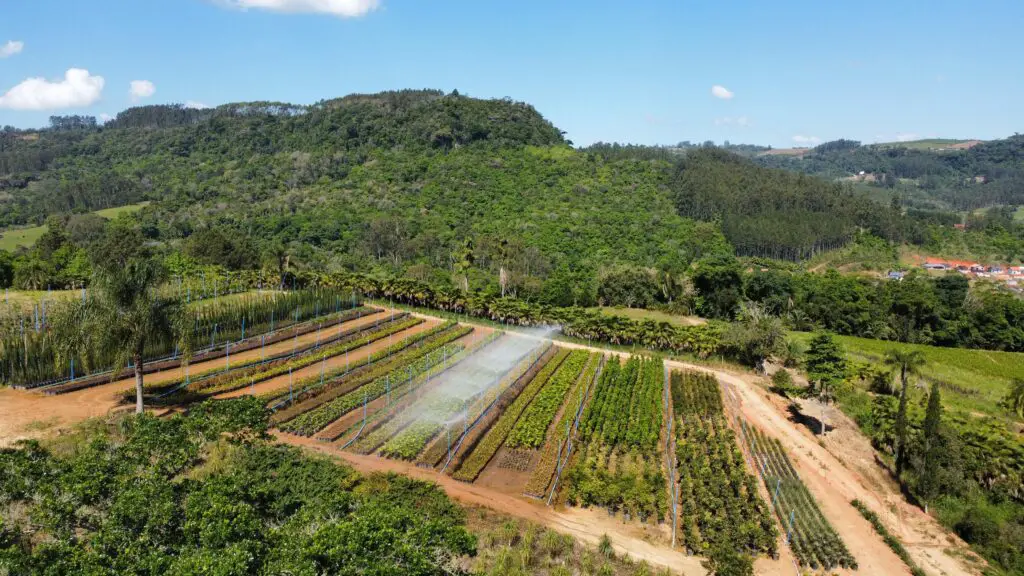
2. Urban Expansion
As cities grow, forests are cleared to make way for housing, roads, and infrastructure. This not only destroys trees but also fragments habitats.

3. Logging and Wood Industry
The demand for paper, furniture, and construction materials drives large-scale logging, which is often unsustainable.

4. Wildfires
Some fires occur naturally, but many are caused by human negligence, like unattended campfires or discarded cigarettes.

5. Mining and Infrastructure Projects
Activities like mining and dam construction often require large areas of land, leading to significant deforestation.

Environmental Impacts of Tree and Plant Destruction
1. Climate Change
When trees are cut down, they release stored carbon dioxide, contributing to global warming. Deforestation accounts for nearly 15% of global carbon emissions.
2. Loss of Biodiversity
Deforestation forces animals and plants to adapt, migrate, or face extinction. This disrupts ecosystems and reduces biodiversity.
3. Soil Degradation and Desertification
Without tree roots to hold it together, soil becomes prone to erosion. Over time, this can turn fertile land into barren deserts.
4. Disruption of Water Cycles
Fewer trees mean less water vapor in the atmosphere, leading to reduced rainfall and drier conditions.
5. Increased Natural Disasters
Tree loss can worsen floods and landslides since there’s no vegetation to absorb water or stabilize slopes.


How Does This Affect People?
Deforestation doesn’t just harm the environment—it impacts human lives too.
- Indigenous Communities: Many indigenous groups rely on forests for food, medicine, and shelter. Tree destruction threatens their way of life.
- Agriculture: Without trees, soil quality declines, making farming less productive.
- Natural Disasters: More floods, droughts, and landslides mean higher costs for communities and governments.


Solutions to Protect Trees and Plants
1. Reforestation and Afforestation
Planting trees can restore degraded land and offset carbon emissions.
2. Sustainable Practices
Using wood and paper products responsibly and supporting companies that follow ethical sourcing practices can make a difference.
3. Stronger Laws and Policies
Governments must enforce stricter rules to prevent illegal logging and deforestation.
4. Education and Awareness
Teaching people about the importance of trees can inspire them to take action.
5. Support NGOs
Organizations like WWF and Greenpeace work tirelessly to protect forests. Supporting them can amplify conservation efforts.


Short Answer to the Problem
The destruction of plants and trees harms the environment by increasing carbon emissions, reducing biodiversity, and causing soil and water imbalances. To combat this, we need global efforts like reforestation, sustainable logging, and stronger laws to protect forests.
FAQs
1. Why are trees important for the environment?
Trees produce oxygen, absorb carbon dioxide, and support ecosystems by providing shelter and food for wildlife.
2. What are the main causes of deforestation?
Key causes include agriculture, urbanization, logging, and mining.
3. How does tree destruction affect climate change?
Cutting down trees releases stored carbon dioxide, contributing to global warming.
4. What can individuals do to help?
Plant trees, reduce paper waste, support eco-friendly products, and spread awareness about deforestation.
Conclusion
The destruction of plants and trees isn’t just an environmental issue—it’s a threat to life itself. From climate change to biodiversity loss, the ripple effects are felt far and wide. But it’s not too late to make a change. By understanding the importance of trees and taking collective action, we can protect our planet for future generations.
Let’s act now, before the last tree falls.
Plants and Trees
Human Benefits from Growing Plants

Gardening isn’t just a hobby; it’s a life-changing activity with benefits that go beyond the soil. Whether you’re growing plants in a backyard, on your balcony, or in tiny pots indoors, the rewards are immense. This guide breaks down how cultivating plants enriches our lives—physically, mentally, socially, and even financially.
Key Takeaways
- Growing plants improves physical and mental health.
- Plants clean the air, support biodiversity, and fight climate change.
- Gardening can save money and build community connections.
- Simple gardening tips can help anyone get started.
Why Growing Plants Matters
Imagine a world without greenery. No fresh vegetables on the plate, no trees filtering the air, and no blooming flowers to brighten our moods. Plants aren’t just decorations—they’re essential to our survival and well-being.
From reducing stress to combating climate change, the act of growing plants is like giving yourself and the planet a priceless gift. Let’s explore these benefits in detail.

How Growing Plants Improves Physical Health
1. Better Air Quality
Plants act like natural air purifiers. They absorb harmful pollutants like carbon dioxide and release oxygen, making the air fresher and cleaner. Indoor plants like snake plants and pothos are especially good at improving air quality in homes.
2. Access to Nutritious Food
Growing your own fruits, vegetables, and herbs means you get fresh, chemical-free produce. Plus, eating homegrown food is healthier and tastier than store-bought alternatives. Imagine plucking a ripe tomato or fresh basil for your salad—pure joy!
3. A Natural Way to Exercise
Gardening is surprisingly physical. Tasks like digging, planting, weeding, and watering are great for burning calories and strengthening muscles. Unlike a gym, gardening is enjoyable and rewarding—you’re creating life while staying active.

Mental Health Boost from Gardening
1. Stress and Anxiety Relief
There’s something magical about spending time with plants. The simple act of touching soil can reduce stress hormones and help you relax. Gardening works as a natural therapy that soothes the mind and body.
2. Gardening as Therapy
Many therapists recommend gardening to improve mental health. It helps people struggling with depression, PTSD, or anxiety find peace and purpose. Even small steps, like nurturing a tiny plant, bring immense joy.
3. Improved Focus and Creativity
Being around plants has been shown to boost concentration and creativity. Whether you’re working from home or studying, having greenery nearby can sharpen your mind and keep distractions away.
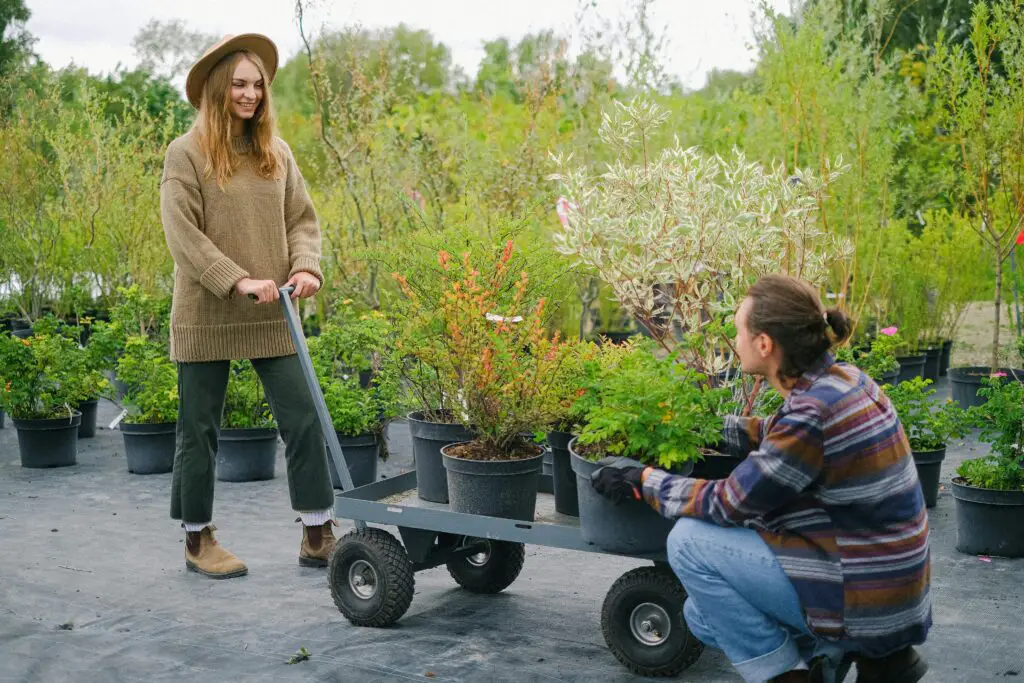
Environmental Benefits of Growing Plants
1. Fighting Pollution
Plants play a crucial role in cleaning the environment. They absorb pollutants, trap dust, and release fresh oxygen, making urban areas more livable.
2. Combatting Climate Change
Every plant you grow helps fight climate change. Trees and shrubs absorb carbon dioxide, a major greenhouse gas, and reduce the overall temperature of the planet.
3. Supporting Biodiversity
Growing a variety of plants in your garden invites bees, butterflies, and birds to thrive. These creatures are vital for pollination, which ensures that plants and crops can reproduce.
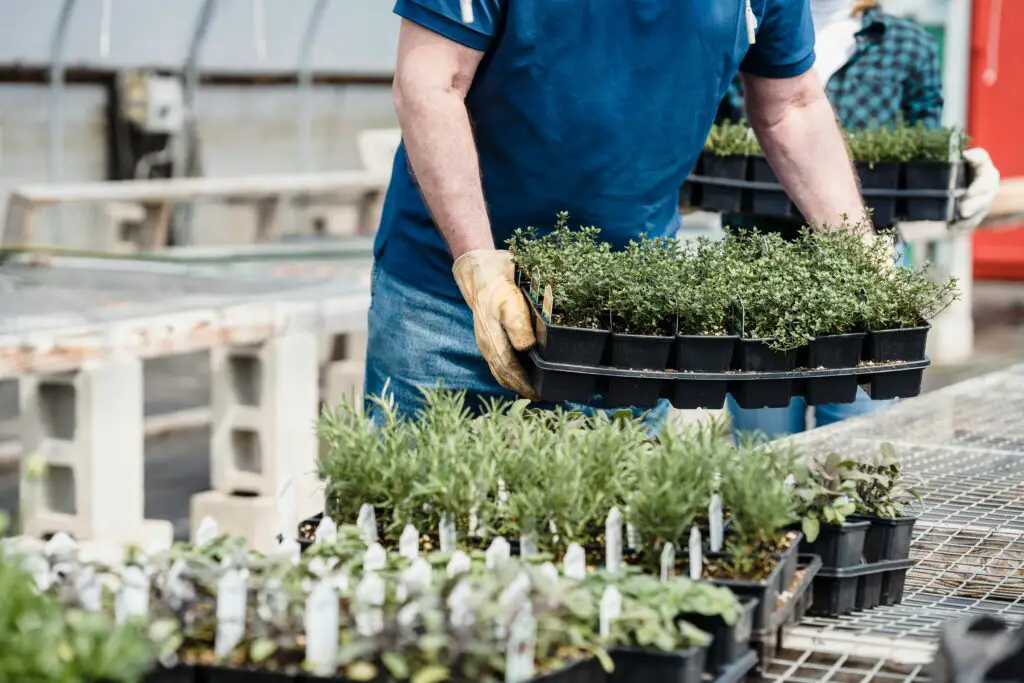
Social and Community Perks
1. Building Stronger Communities
Community gardens bring neighbors together. They provide a space for people to share tips, harvests, and stories while working toward a greener world.
2. Teaching Sustainability
Gardening teaches kids and adults about the importance of sustainability. It’s a hands-on way to understand the value of food, water, and effort in maintaining a healthy ecosystem.

Financial Savings and Sustainability
1. Cutting Grocery Bills
Growing your own produce can save you money. A small vegetable patch can provide a steady supply of seasonal fruits and vegetables.
2. Reducing Waste
Home gardens reduce the need for plastic packaging and long supply chains. It’s a step toward sustainable living that cuts down on waste and promotes self-sufficiency.
Emotional Fulfillment
1. Sense of Achievement
There’s no feeling quite like watching a seed sprout or a flower bloom under your care. Gardening gives you a sense of accomplishment and pride.
2. Reconnecting with Nature
In a fast-paced digital world, gardening is a way to slow down and reconnect with the earth. It’s a reminder of how deeply we’re tied to nature.
How to Get Started with Growing Plants
- Pick the Right Plants: Choose easy-to-grow options like tomatoes, basil, or succulents if you’re a beginner.
- Gather Basic Tools: You’ll need pots, soil, gloves, and watering equipment.
- Learn Plant Needs: Some plants love sunlight; others prefer shade. Know your plants’ requirements before planting.
- Start Small: Begin with a small area or a few pots to avoid feeling overwhelmed.
- Use Eco-Friendly Methods: Opt for compost, organic fertilizers, and natural pest control methods to grow sustainably.
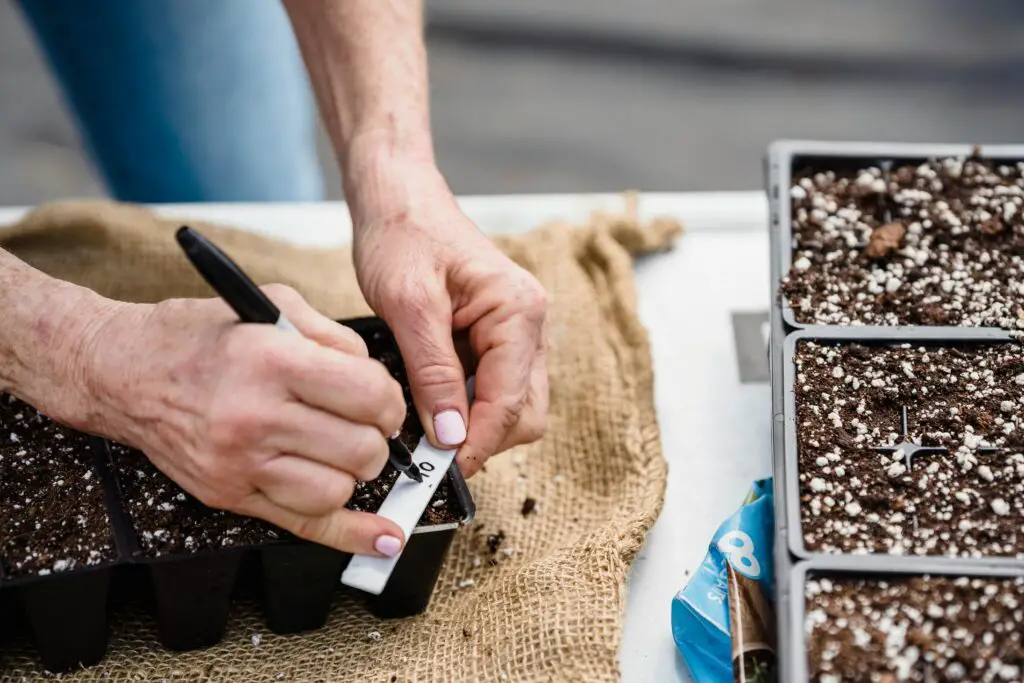
FAQs
1. What are the easiest plants to grow for beginners?
Herbs like basil and mint, vegetables like lettuce, and succulents are great choices for beginners.
2. Can I grow plants in a small space?
Absolutely! Container gardening and vertical gardens are perfect for balconies or limited spaces.
3. How do plants improve mental health?
Caring for plants reduces stress, improves focus, and provides a sense of calm and purpose.
Conclusion
Growing plants is more than just a pastime—it’s a way to nurture your body, mind, and the environment. Whether you’re planting flowers for beauty, vegetables for food, or trees for shade, the benefits ripple through every part of your life. Start small, stay consistent, and watch how something as simple as growing a plant can transform your world.
Plants and Trees
Parasitic Plants Example in The World

Parasitic Plants Example
One of the most interesting and least-known groups of plants is the parasitic plants. These plants live off other plants, obtaining water and nutrients from their hosts. Parasitic plants have evolved various methods to attach themselves to their hosts, and some can be quite devastating to crops. Despite their negative impacts, parasitic plants still offer scientists a valuable opportunity to study plant evolution and how organisms adapt to their environment.
The world of plants is full of surprises. Some plants have evolved to live as parasites, attaching themselves to other plants and stealing their nutrients. These strange plants have a unique way of life that scientists still try to understand. Here we will look at some of the fascinating parasitic plants out there.
“Parasitic Plants Example“
Viscum album
The Viscum album, or European mistletoe, is a parasitic plant found throughout Europe and parts of Asia. The plant attaches itself to the branches of trees and grows by extracting water and minerals from the tree. The mistletoe produces white berries poisonous to humans but is eaten by birds who spread the seeds in their droppings.
Viscum album, also known as European mistletoe, is a parasitic plant that grows on trees. The plant attaches itself to the tree and extracts water and minerals from the bark. Viscum album is most commonly found in Europe, where it is used in traditional medicine. The plant has been used to treat various illnesses, including cancer.
“Parasitic Plants Example“
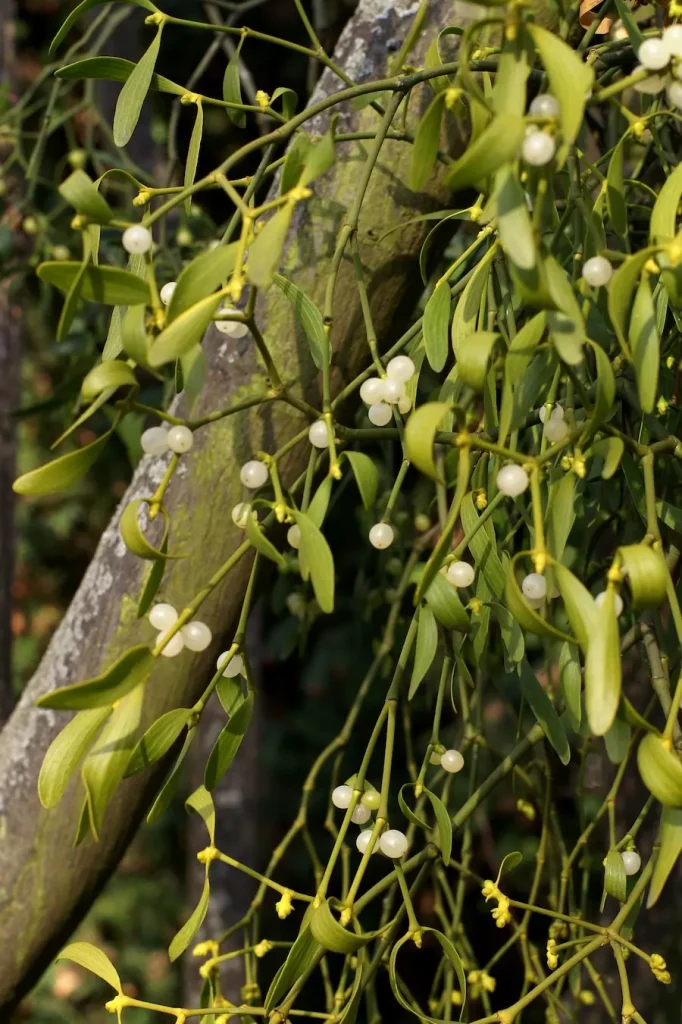

Cuscuta Campestris
Cuscuta campestris is a parasitic plant that grows on other plants, attaching with small roots called haustoria. It is most commonly found in tropics, subtropics, and temperate areas. The plant has no chlorophyll, so it cannot produce its food. Instead, it absorbs nutrients from the host plant.
Cuscuta campestris is a parasitic plant that grows on other plants. It has no leaves, stems, or roots of its own but derives its nutrients and water from the host plant. Cuscuta campestris is found in fields and meadows throughout much of the world.
“Parasitic Plants Example“


Orobanche Ramosa
Orobanche ramosa is a parasitic plant commonly found in the United States. The plant attaches to the roots of other plants and steals their nutrients, which can kill the host plant. Orobanche Ramosa can be identified by its small, white flowers that grow in clusters.
Orobanche ramosa is a parasitic plant that attaches itself to the roots of other plants to steal their nutrients. It is a weed found in many parts of the world and is challenging to get rid of.
“Parasitic Plants Example“


Rafflesia
The Rafflesia is the world’s largest flower. It can grow up to one meter in diameter and weigh up to fifteen kilograms. The Rafflesia is found in the rainforest of Southeast Asia. It is a parasitic plant that relies on the host vine for nutrients and water. The Rafflesia does not have any leaves, stems, or roots. It flowers for just five days and then dies.
“Parasitic Plants Example“

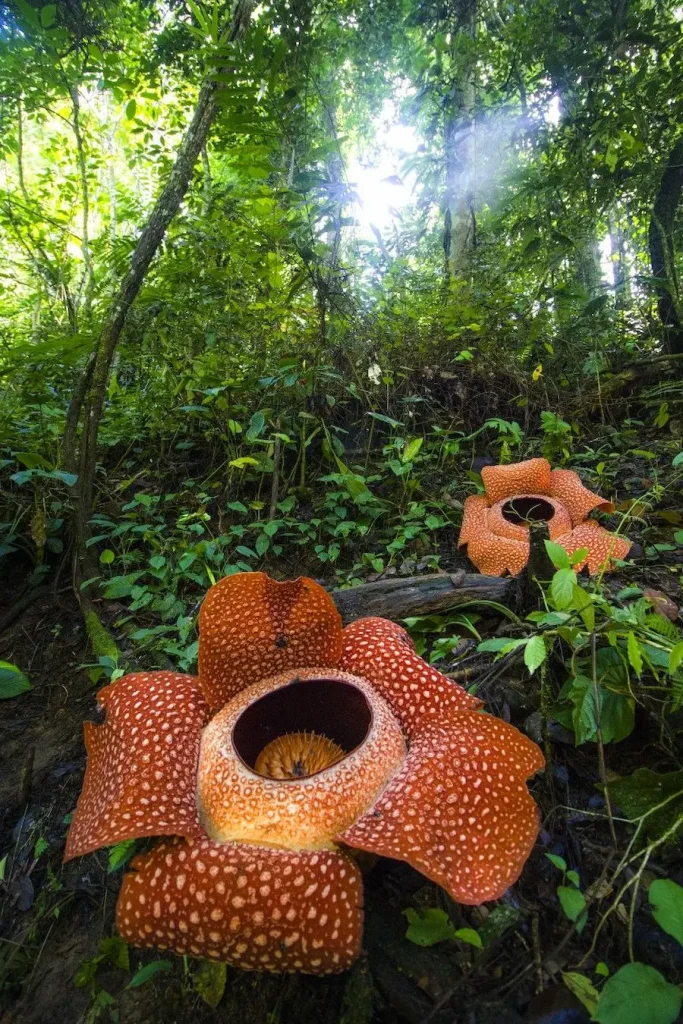
Phelipanche Aegyptiaca
The parasitic plant Phelipanche aegyptiaca, also known as Egyptian Broomrape, is a troublesome weed found in many parts of the world. It has a complex life cycle that makes it difficult to control.
Phelipanche aegyptiaca is an annual parasitic plant that attaches to the roots of its host plant, typically a weed, and obtains water and nutrients from it. The plant is found in North Africa, the Middle East, and southern Europe.
“Parasitic Plants Example“
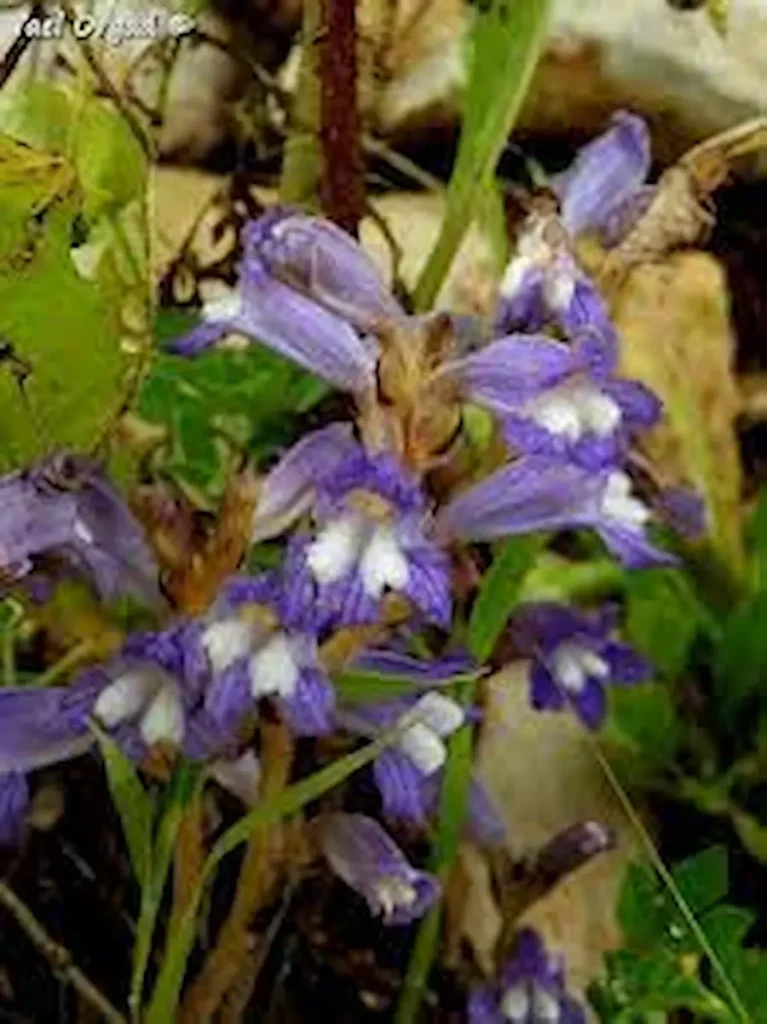

Orobanche minor
Orobanche minor, also known as broomrape, is a parasitic plant that attaches to the roots of other plants and derives its nutrients from them. This weed is found in many parts of the world and can be a nuisance to farmers and gardeners. It has few redeeming qualities and is considered a weed by most.
Native to Europe and North Africa, Orobanche minor is an annual parasitic plant found in disturbed areas such as roadsides and meadows. This small, inconspicuous plant has a long, slender stem about 12 inches high and is topped with a few small, yellow flowers. Orobanche minor attaches itself to the roots of other plants and extracts water and nutrients from them, eventually killing the host plant.
“Parasitic Plants Example“
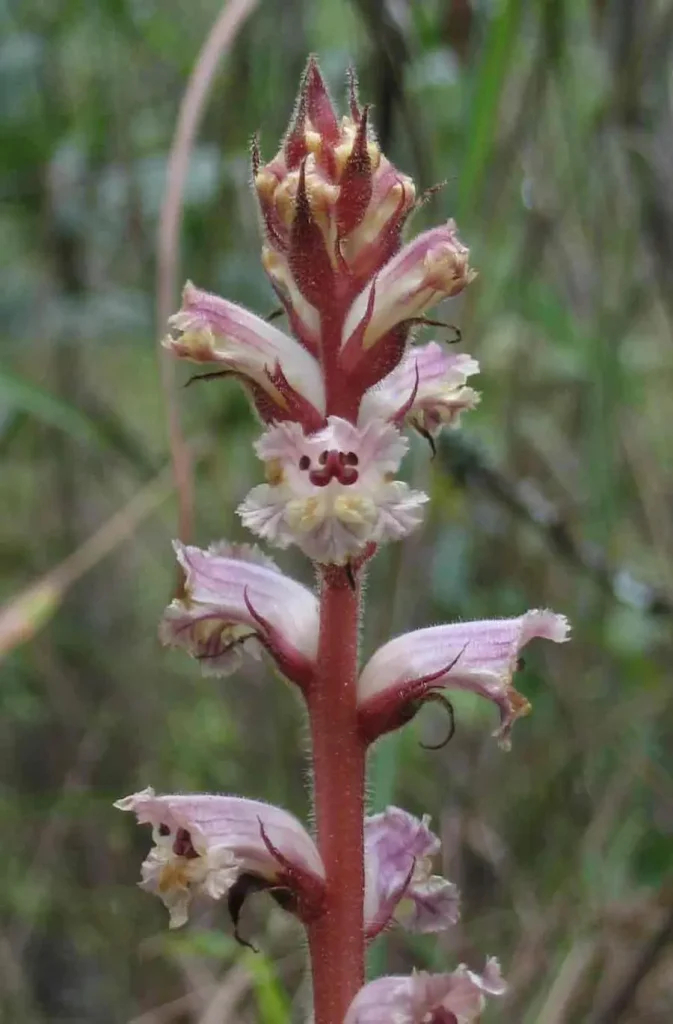

Cuscuta reflexa
Cuscuta reflexa is a parasitic plant that grows on other plants. It is a vine that wraps around its host plant and leaches nutrients. C. reflex is found in North America and Europe. It was introduced to North America as an ornamental plant, and it has since spread into the wild.
Cuscuta reflexa is a parasitic plant that grows on other plants. It is most commonly found in the tropics and subtropics. C. reflexa attaches to its host plant by means of root-like structures called haustoria. These haustoria penetrate the host plant’s tissues and extract nutrients from them. C. reflexa is a severe agricultural pest and can cause significant damage to crops.
“Parasitic Plants Example“


Cuscuta pentagona
The parasitic dodder plant Cuscuta pentagona was first discovered in the early 1800s by a German botanist named Friedrich Ludwig Willdenow. Since then, this little-known plant has been the subject of numerous studies but remains relatively unknown to the general public. C. pentagona is a slender, yellowish-green vine that attaches itself to the stems of other plants and sucks out their nutrients.
The parasitic weed known as Cuscuta pentagona can be found in the United States and parts of Canada. The weed attaches itself to the roots of other plants and sucks out their nutrients, often killing the host plant in the process. Cuscuta pentagona is a member of the morning glory family and can be identified.
“Parasitic Plants Example“


Greater dodder
Greater dodder (Cuscuta pentagona) is a parasitic vine native to North America. It can be found in fields, pastures, and open woodlands. Greater dodder attaches to its host plant by wrapping around it and using suckers to attach to the host plant. The plant can extract water and nutrients from the host plant, harming or killing the host plant. Greater dodder is considered a weed and can be controlled through mechanical or chemical means.
“Parasitic Plants Example“

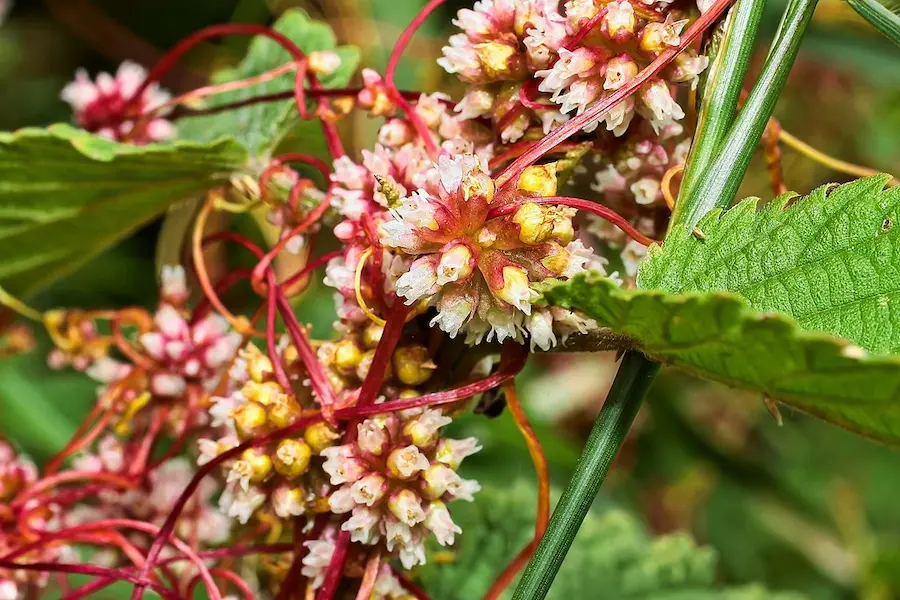
Orobanche crenata
Orobanche crenata is a parasitic plant
That can be found in Europe and North America. The plant attaches itself to the roots of other plants, stealing their nutrients. Orobanche crenata has no chlorophyll, so it cannot produce its food.
This plant attaches itself to the roots of other plants, stealing their water and nutrients for its growth. Orobanche crenata has been used in traditional medicine for centuries, but it is also toxic. Orobanche crenata can be identified by its small, white flowers. The plant is not considered to be a threat to humans or animals.
“Parasitic Plants Example“


“Parasitic Plants Example“
Environmental Impact in Parasitic Plants
EnvironmeParasitic plants, while not often thought of as significant contributors to environmental problems, can have a surprisingly large ecological footprint. One of the most insidious ways these plants harm the environment is competing with other vegetation for resources like water and light. Additionally, many parasitic plants release toxins that can contaminate soils and waterways. Some experts even believe that parasitic plants may be responsible for spreading harmful plant diseases.
Invasive parasitic plants have a negative environmental impact that can be difficult to reverse. These plants often lack the natural predators that keep their populations in check in their native habitats, and they can outcompete and even displace native plant species. This can lead to a loss of biodiversity and change the dynamics of an ecosystem, potentially causing other species to decline.
“Parasitic Plants Example“
Conclusions
“Parasitic Plants Example“
In conclusion, parasitic plants are fascinating organisms that have unique evolutionary histories. They play important roles in their ecosystems, and they offer scientists opportunities to learn more about plant biology and evolution. Parasitic plants are also valuable sources of pharmaceuticals and other useful compounds. Scientists are still learning about these remarkable plants, and there is much to be discovered. I encourage you to learn more about parasitic plants and their amazing abilities.
In conclusion, parasitic plants are fascinating and unique organisms worth learning about. They play an important role in the ecosystem and can be used for medicinal purposes. It is important to be aware of parasitic plants’ dangers and take precautions when hiking or camping in areas where they are present.
More Resources
Biggest Trees in The World List
-

 Animals1 year ago
Animals1 year agoTypes of Ants Living in the World and Information
-

 Forests1 year ago
Forests1 year agoThe 10 Best Forests to Visit in the World
-

 Ocean1 year ago
Ocean1 year agoOceans in the World and Their Information & Locations
-

 Forests4 years ago
Forests4 years agoWhat Is The Biggest Rainforest In The World?
-

 Animals4 years ago
Animals4 years agoMost Popular Wild Animals in The World
-

 Animals4 years ago
Animals4 years ago(10) Insects Are Animals in the world?
-

 Forests1 year ago
Forests1 year agoThe Main Factors That Contribute to Forest Destruction
-

 Nature11 months ago
Nature11 months agoThe 10 Largest Farms in the World




